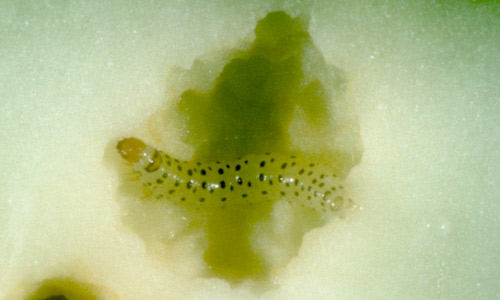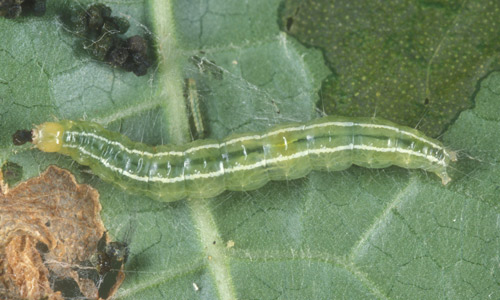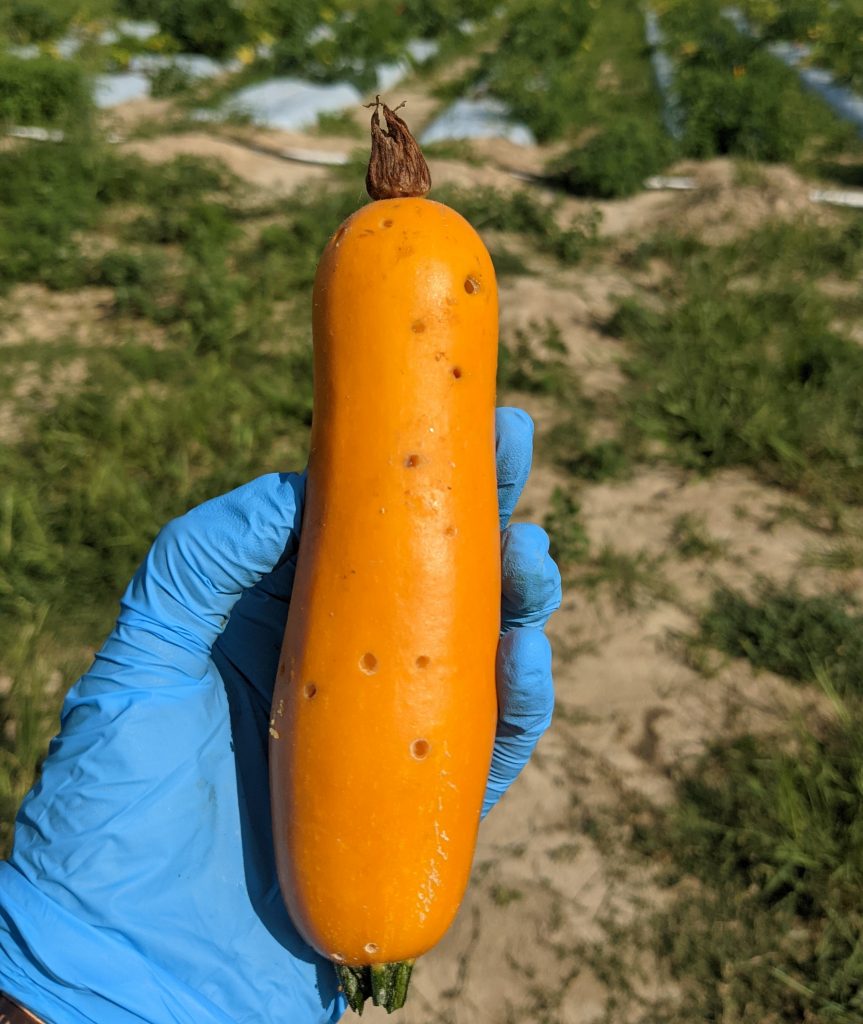We at Virginia Tech are starting a pickleworm and melonworm monitoring program. This program involves information exchange between cucurbit growers and extension agents across the state that look for these pests’ damage to blossoms or fruit and report it back to me, Lorena Lopez, a vegetable entomologist at the Eastern Shore AREC. I will send out a weekly alert of the incidence of these pests in the state, based on this information chain and monitoring efforts in cucurbit crops located in Blackburg and the Eastern Shore AREC. The goal is to keep growers updated and help them manage these sporadic late-season pests.
A quick overview of these pests:
Both pickleworms and melonworms feed on wild and cultivated cucurbit species. Pickleworm adults are not active during the day, only at night when females lay their eggs close to flowers or flower buds. The larvae burrow into the fruit where it feeds and develops. Larva color varies from light green to translucent with multiple dark spots and varies in size from 0.05 to 0.6 inches long. Melonworm adults are usually found during the day on the plants but they can be active during day and night. Females lay their eggs on the underside of the leaves. Larva feeds mostly on leaves and can cause damage by skeletonizing them. However, melonworm larvae can also feed on the fruit and on some occasions can borrow into the fruit like pickleworms. Melonworm larvae are usually light green with two white lines in the back and have a similar size to the pickleworm larvae. Adults of both pests are very hard to differentiate.



Early this week we found melonworms in our yellow summer squash at the Eastern Shore AREC. Yellow summer squash is one of the preferred hosts of these pests. All melonworm larvae were found feeding inside the fruit which is uncommon for this pest. We haven’t found any pickleworms yet.
The help and communication network between extension agents, cucurbit growers, and entomologists like myself is vital for the monitoring program. Thus, if you find borrowing damage in the cucurbit flowers or fruit in your respective farm or gardens, please contact me at lorelopezq257@vt.edu
Stay tuned for next week’s update!
Lorena Lopez, Ph.D., Department of Entomology, Eastern Shore AREC, Painter, VA
